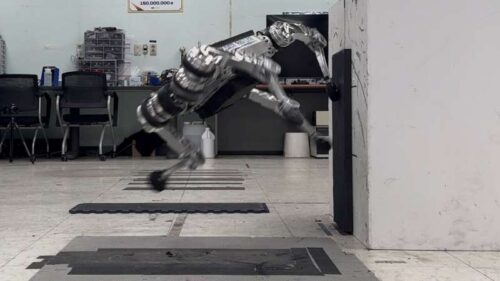The four-legged robot can run, jump, and climb over obstacles using AI. It moves through places like walls, stairs, and rocks.

A team of roboticists and AI experts at the Robotics & Artificial Intelligence Lab in Korea has developed and tested a four-legged robot capable of performing parkour maneuvers. In a paper published in Science Robotics, the researchers explain how they equipped the robot with a controller that enables it to plan and track its movements, allowing it to navigate environments autonomously.
Parkour is a discipline that involves navigating obstacle-filled, urban environments by climbing, jumping, and running across terrain. The goal is to move from one point to another without injury. To prepare their robot for this activity, the team began by giving it four legs to improve stability and mobility.
They then developed a controller that combines route planning with tracking. This system allows the robot to determine where to place its feet and how to coordinate its body movements to move through terrain.
The planner was developed using a neural network that was trained and then used to generate and update a map. According to the team, this map was used not only for planning a route across terrain but also for deciding where the robot should place its feet to stay on the path. The planner combined this map data with input from the robot’s camera and sensors to make decisions.
The robot, named Raibo, underwent testing that started with simulations to check that its components worked correctly. Then Raibo was put through trials in lab environments to evaluate its performance and study its mapping and route-planning.
The tests showed that Raibo could run vertically along walls for short distances, jump across gaps over 1.3 meters, and navigate courses with stones. It was also able to climb ramps and stairs, step onto boxes, and step down on the other side.
The team plans to continue their work with the robot. They have developed Raibo 2 and started testing it, aiming to improve its abilities and ensure safe operation. They see the robot being used in disaster zones or other environments where its skills could be helpful.
Reference: Hyeongjun Kim et al, High-speed control and navigation for quadrupedal robots on complex and discrete terrain, Science Robotics (2025). DOI: 10.1126/scirobotics.ads6192








